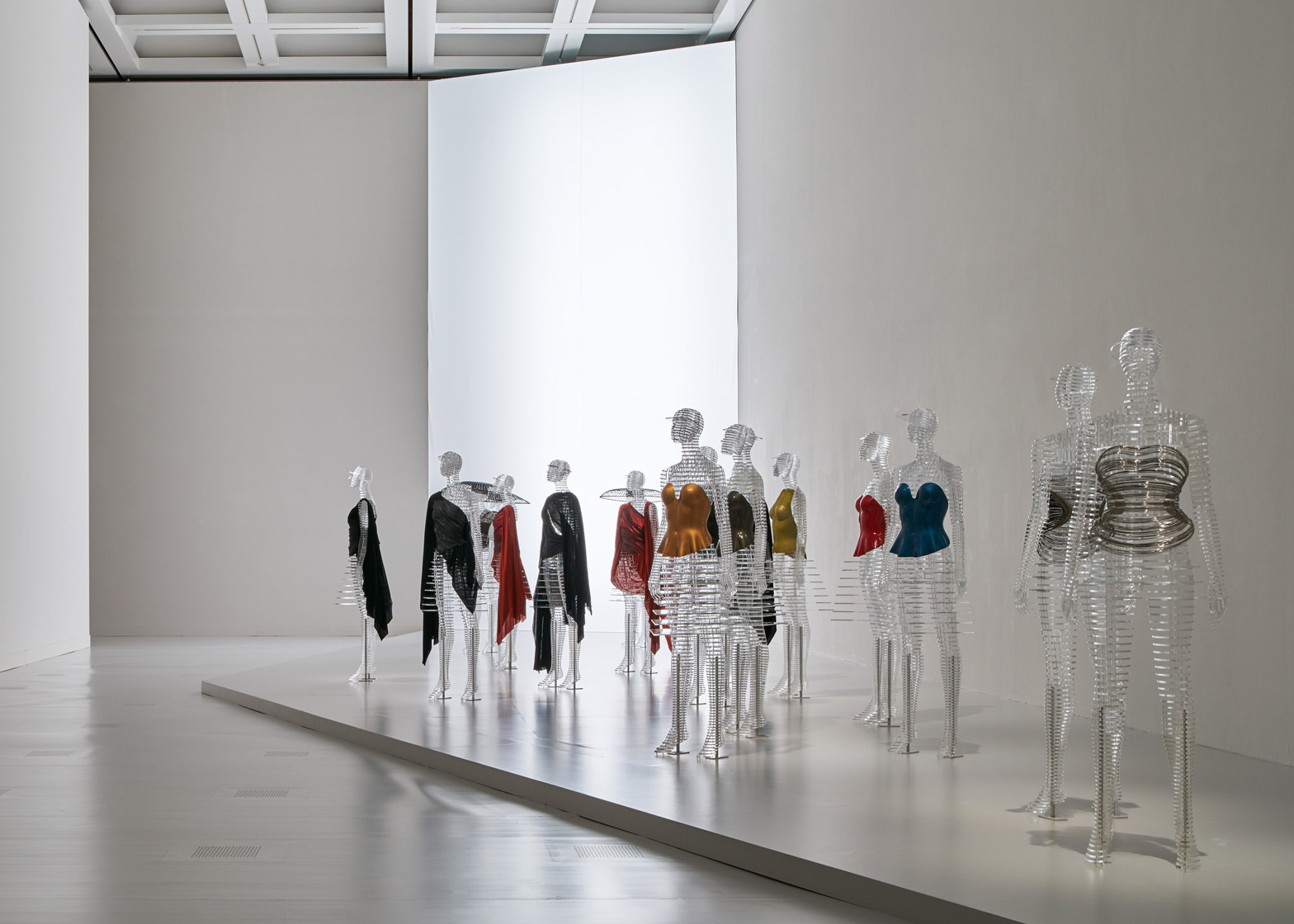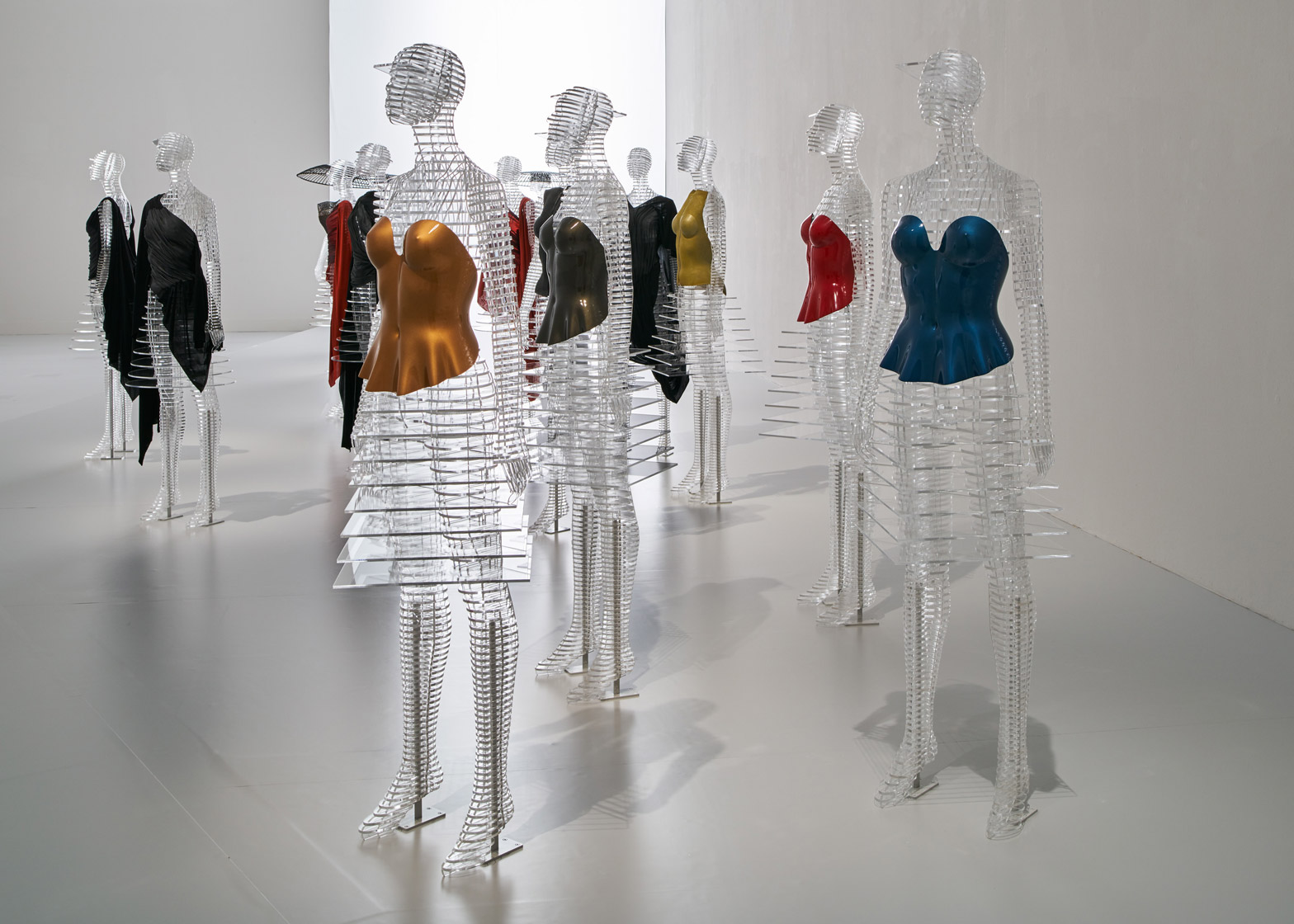Forty-five years of innovative fashion and design by Issey Miyake are on display at the National Art Center in Tokyo (+ slideshow).
The Work of Miyake Issey exhibition opens today in the Japanese capital, promising an "unprecedented" insight into the fashion designer's career from 1970 to today.
Miyake, 77, is best known for his origami-like garments, technological development of textiles and unique approach to fashion.
"This exhibition will shed light on Miyake's ideas about making things and his approach to design by examining his entire career, from his earliest work to his latest projects, and his explorations of greater creative possibilities in the future," said a statement from the brand.
The exhibition is divided across three large rooms. In the first, Miyake's early designs from the 1970s are presented in a long line on square podiums.
These garments all demonstrate the designer's idea of "a piece of cloth", for which he aimed to transform fabric beyond recognition into wearable items.
"Miyake has always explored the relationship between a piece of cloth and the body, and the space that is created as a result, unrestricted by any existing framework," said the statement.
"In addition, along with his team of designers, he persistently undertakes research and development to create clothing that combines both innovation and comfort."
The second room is dedicated to Miyake's work from the 1980s, themed around a more human-focussed approach that paid close attention to the shapes of the body.
Mannequins in these two spaces were created by long-time collaborator Tokujin Yoshioka, who used cardboard figures to display the earlier clothing and transparent acrylic bodies for presenting the more futuristic garments.
The largest room includes a plethora of Miyake's more recent pleated, folded and sculptural garments. Sections explain the different printing and construction techniques used to create the clothing, next to finished examples.
Graphic designer Taku Satoh's visual identity and backdrops in the space were created to "function as a place of discovery where viewers can both enjoy as well as gain a deeper understanding of Miyake's approach to making clothes".
Miyake was born in Japan's Hiroshima Prefecture in 1938. While studying graphic design at Tama Art University in 1960, he sent a letter to the World Design Conference to express his concern that clothing design was not included in the event.
"At that point, Miyake's notion that clothing is not merely 'fashion' – ie something that changes with the times – but a form of design that is closely connected to our lives on a much more universal level was already apparent," reads the exhibition notes.
The designer established Miyake Design Studio in 1970 and began showing his fashion collection in Paris three years later.
Throughout his career, Miyake has developed a variety of innovative approaches to manipulating fabric into new shapes and textures, creating garments that move and fold in unusual ways.
Examples include the 132 5. pieces, which expand from two-dimensional geometric shapes into structured shirts, skirts, pants and dresses, and clothes that are baked in an oven to form undulations across the fabric.
In a 2014 interview, Miyake's head of womenswear Yoshiyuki Miyamae told Dezeen that the brand's focus is "being innovative with technology".
Miyake's black polo necks were also famously worn by Apple founder Steve Jobs.
Today, the Issey Miyake brand offers a number of clothing ranges for women and men, as well as watch and fragrance lines.
Miyake and his studio have also created origami-style lamps for Artemide and a homeware collection with Iittala.
The Works of Miyake Issey at the National Art Center, Tokyo, runs from 16 March to 13 June 2016.
Photography is by Masaya Yoshimura.













